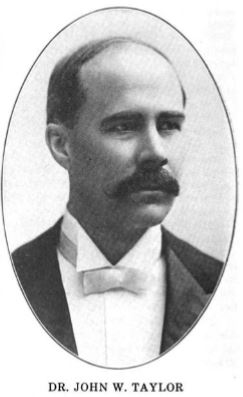These pages are an attempt at a comprehensive list of any South Dakotans who supported the suffrage movement in almost any way. The research is ongoing. And the total list is long, so I have the full lists in pieces by last initial (see alphabet of links below). On this page I include those with a significantly active role or contribution in the movement, and I have made biographical sub-pages for several of those if you click on their names.
A B C D E F G H I J K L M N O P Q R S T U V W X Y Z
Irene G. Adams (1839-1931) [Webster, Day County] was vice-president and president of SD Equal Suffrage Association from 1890 to 1892.
William F. Bailey [Faulkton/Roanoke, Faulk County] was elected president of the Faulk County Equal Suffrage Club at the county convention held at the Methodist Episcopal church in May 1890 and also served as the Roanoke township suffrage club [Citing Faulk County Record, Thursday, May 22, 1890, in Faulk County Newspaper Excerpts]. He was elected secretary (a salaried position) for the South Dakota Equal Suffrage Association upon its reorganization in July 1890 [Wittmayer, The 1889-1890 Woman Suffrage Campaign, 218; Wessington Springs Herald (SD), July 11, 1890; The Daily Plainsman (Huron, SD), July 10, 1890; assorted items from Primarily Washington, “Page 31,” Page 44 : The Convention, “Page 45 : Entire Page,” and Dakota Ruralist, August 16, 1890, “Page 57 : Entire Page,” Emma Smith DeVoe: 1880-1890 (Scrapbook D), WSL Manuscripts, MS 171, Box 10; Page 004 : Letter addressed to “Women of South Dakota,” Emma Smith DeVoe: 1892-1894 (Scrapbook C), Box 9]. He later relocated to Washington and was principal of the Parkland School [“Letter from W. Bailey to Emma DeVoe, 11/16/1910, page 1,” Correspondence, Authors by Surname: B, WSL Manuscripts, MS 171, Box 5].
Rev. M. Barker (1829-1911) [Huron, Beadle County] secretary (staff) of SD Equal Suffrage Association 1889-1890.
Helen M. Barker (1834-1910) [Huron, Beadle County] legislative committee with WCTU Franchise Department 1887, president of Dakota Territory WCTU, presided at state suffrage convention in Huron October 1889, state lecturer and organizer of SD Equal Suffrage Association (ESA) 1889, executive committee of SD ESA 1890.
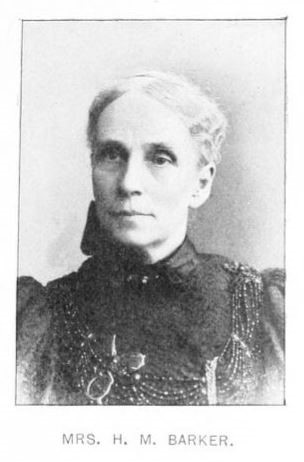
L.F. (L. Frank) Baum (1856-1919) [Aberdeen, Brown County] was the first secretary of the Aberdeen Equal Suffrage club [Saturday News (Watertown SD), November 14, 1918]. As editor of the Aberdeen Saturday Pioneer starting in January 1890, he frequently published material supportive of the suffrage movement, often using his sharp wit and not always without critique of the suffragists themselves, and rebutted anti-suffrage editorials in other papers [The Mitchell Capital (SD), January 31, 1890; Early History of Brown County, usgwarchives.net, p.181, 186; Nancy Tystad Koupal, “On the Road to Oz: L. Frank Baum as Western Editor.” South Dakota History 30(1) (2000), 49-106; Koupal, “The Wonderful Wizard of the West: L. Frank Baum in South Dakota, 1888-91.” Great Plains Quarterly 9 (Fall 1989), 203-215]. “The group that Baum considered capable of revitalizing American politics was women, and he supported the cause of woman suffrage at every opportunity” [Koupal, “The Wonderful Wizard,” 208]. His mother-in-law was national suffrage leader Matilda Joslyn Gage. She and Susan B. Anthony both stayed at the Baum house during the 1889-1890 campaign [Koupal, “The Wonderful Wizard,” 210]. See also “Family Parlor and Oz Room,” Matilda Joslyn Gage Foundation.
May B. Billinghurst (1863-1946) [East Pierre, Hughes County] served on the state legislative committee and as secretary of northeast district for SD Universal Franchise League (UFL) in 1913-1914, contributed to the suffrage publication South Dakota Messenger in 1913-1914, served on the advisory committee of SD UFL in 1915-1917, and held various offices in the Hughes County suffrage association from 1916-1918.
Susie Bird (1863-1943) [Sturgis / Belle Fourche] was northwest district president for SD Universal Franchise League (UFL) 1914 and served on the advisory committee of SD UFL in 1915.
LoElla H. Blank (1857-1926) [Wessington Springs, Jerauld County) was co-editor of the Wessington Springs Herald with her husband T. Linus Blank, and she promoted suffrage and “female entrepreneurship” in her editorial columns [Dunham, History of Jerauld County (1909), 189, 204, 223; About Wessington Springs Herald, Chronicling America-LOC; Wessington Springs Herald (SD), February 5, 1886; “Lo Ella Lamb Blank,” Find-a-Grave.com]. In 1885, she was elected superintendent of the Jerauld County Women’s Christian Temperance Union’s franchise department and was later the Media Township vice-president for the Jerauld County Equal Suffrage Association [Wessington Springs Herald (SD), August 21, 1885, December 18, 1885, March 18, 1887, December 7, 1888, and December 6, 1889]. In 1886, a discussion on effective methods for influencing the ballot on temperance was “opened by Mrs. L.H. Blank, who suggested the press, and efforts with those with whom we come in contact and the presence of the women and children at the polls and in the meantime do our utmost towards the speedy enfranchisement of our own sex” [Wessington Springs Herald (SD), May 28, 1886]. In June 1890, as vice-president of the Media Township E.S.A., she encouraged local women to vote in the upcoming school elections, concluding her call by writing: “Hoping to meet all the ladies of District No. 1 at Beech’s school house, I am, Yours for ‘Equality before the Law,’ Mrs. L.H. Blank, Vice-Pres. Media Township E.S.A.” [Wessington Springs Herald (SD), June 13, 1890]. In August 1890, she attended the Mitchell convention [Wessington Springs Herald (SD), August 29, 1890].
LoElla H. Lamb moved to Wessington Springs and married Thomas Linus Blank in 1885 [Wessington Springs Herald (SD), July 3, 1885]. In 1885-1886, she worked as a teacher at a nearby rural school [Wessington Springs Herald (SD), September 25, 1885, December 4, 1885, February 26, 1886]. She was active in the leadership of local and county W.C.T.U. organizations [Wessington Springs Herald (SD), April 2, 1886–October 12, 1888]. The Blanks also had an interest in the Farmers Alliance [Wessington Springs Herald (SD), February 5, 1886, July 6, 1888]. Her husband also worked as a railroad and civic engineer and was often away on projects for extended periods of time, during which, she managed the Herald [Wessington Springs Herald (SD), May 28, 1886, October 21, 1887, April 11, 1890, July 25, 1890]. In 1891, the Blanks moved to Nebraska and then to Iowa, living in Des Moines and Grinnell [1900-1940 census via Ancestry.com; Mitchell Capital (SD), December 9, 1898; Evening Times-Republican (Marshalltown IA), September 6, 1910, April 10, 1914, July 25, 1914, September 3, 1915; “LoElla Lamb Blank,” Findagrave.com].
Selection of her “Woman’s Realm” columns in the Herald: April 16, 1886; April 23, 1886, September 17, 1886; October 1, 1886; December 10, 1886; February 11, 1887; March 11, 1887; May 31, 1889; February 21, 1890, May 23, 1890; August 1, 1890; August 29, 1890; September 5, 1890; September 12, 1890; September 19, 1890; and October 3, 1890.
Marietta M. Bones (1842-1901) [Webster, Day County] was the National Woman Suffrage Association’s vice-president for Dakota Territory, the primary advocate for suffrage at the 1883 statehood convention, and founded the first local suffrage association in the territory, but later turned against the movement.
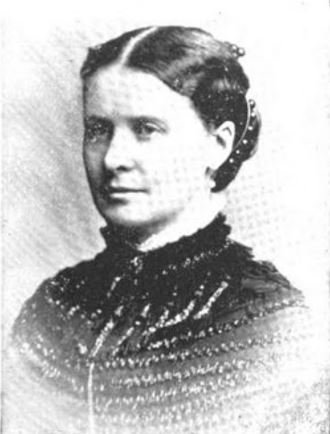
Rose Bower (1876-1965) [Rapid City, Pennington County] was a suffrage lecturer, columnist, lobbyist, and musician 1907-1917 including a position as secretary SD Equal Suffrage Association (ESA) from 1907 to 1909, state superintendent of Franchise Department of Women’s Christian Temperance Union 1908, and was part of Ohio campaign in 1912 and New York State campaign with Carrie Chapman Catt in 1915.
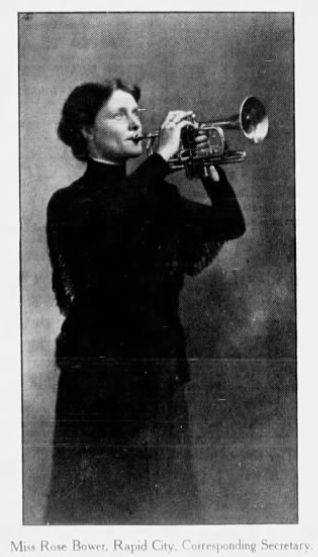
Etta A. Estey Boyce (1862-1920) [Sioux Falls, Minnehaha County] was a member of the legislative committee of the SD Universal Franchise League with Mamie Pyle and Mabel Rewman in 1915 and with Pyle, Rose Bower, Ruth Hipple, and Lydia Johnson in 1917 [Patricia O’Keefe Easton, “Woman Suffrage in South Dakota: The Final Decade, 1911-1920,” South Dakota History (1983), 215; Pierre Weekly Free Press (SD), January 4, 1917; Lemmon Herald (SD), January 17, 1917]. She also served with Pyle, Whiting, and Rewson as delegates to the national suffrage convention in D.C. in 1917 [Pierre Weekly Free Press (SD), November 29, 1917]. In late 1918, she spent time in New York, and upon her return to Sioux Falls reported to the county franchise league about NYC’s “Schools for Women Voters [Argus-Leader (Sioux Falls, SD), January 9, 1919]. She was a musician, taught harmony and vocal music, and was married to attorney Jesse W. Boyce [Kingsbury, History of Dakota Territory, vol. 5 (1915), 559-560].
Mary A. Bradford (?-1896) [Ree Heights/Miller, Hand County] was active with the WCTU in 1884-1885, including speaking in Lake Preston and DeSmet to encourage those Unions to circulate petitions to the territorial legislature for the suffrage amendment. She was a noted organizer of suffrage associations, working in three-quarters of the townships of Potter County, Swan Creek in Walworth County, and Gowdyville and Hawley in Hyde County in June-July; was a guest of the WCTU at Pleasant Ridge (Davison Co.) in August 1890; and visiting Twin Lakes, Parsons, Protection, Wyatt, Rives, Lyonville, and Gann Valley for a Buffalo County convention in October. She wrote that she had about eighty-five audiences and visited twelve counties overall: Charles Mix, Douglas, Davison, Hanson, Sanborn, Jerauld, Aurora, and Brule, arriving home on November 7 — “All this time I donated gladly…. I furnished my own team driver… traveled 10,000 miles in 6 months” [DeSmet Leader (SD), December 27, 1884, January 10, 1885; Press and Daily Dakotaian (Yankton SD), August 2, 1884, January 9, 1885; Mitchell Capital (SD), September 5, 1890; The Woman’s Journal (Boston MA), October 25, 1890, p.340, Schlesinger Library, Harvard University; Letter to Mrs. E.M. Wardall from Mary A.S. Bradford, December 2, 1890, #2021-03-30-0097, 1890 Campaign Folder 3, Box 6675, Folder 28, H91-74, Pickler Papers, SD State Archives, Pierre]. Mary Bradford was from Ohio and homesteaded properties about equidistant from Ree Heights and Miller. From 1885 to 1891, she taught in rural schools, including the “Southeast school house” and “in the Furman district.” She even wrote to Libbie Wardall with “6 boys at the blackboard now” and “while pupils play.” Upon her death from pneumonia in the winter of 1896, she was described as an “aged widow lady” who only had a young nephew in the area, and was buried in the G.A.R. cemetery with expenses for the funeral from the county poor fund [Hand County Press (Miller SD), April 30, 1885, August 26, 1886, March 17, 1887, September 8, 1887, April 19, 1888, June 11, 1891, August 6, 1891, September 15, 1892; Pioneer Press (Miller SD), January 23, 1896, April 2, 1896, April 16, 1896, January 7, 1897; BLM-GLO Records, Section 33, T114N, R69W; section 4, T111N, R69W; Letter to Wardall from Bradford, December 2, 1890, #2021-03-30-0097, Pickler Papers].
Jane Rooker Breeden (1853-1955) [Pierre, Hughes County] auditor 1895, superintendent of literature, and press committee for SD Equal Suffrage Association (ESA) 1896-1900; auditor for SD ESA 1907-1909, legislative committee for SD ESA, president of Pierre Equal Suffrage Association, and secretary of the Hughes County Universal Franchise League 1916-1918.
Emma B. Byrne (1866-1965) [Faulkton, Faulk County] spoke at a Fort Pierre suffrage meeting in 1914 about women wanting the vote to make the world better [Woman’s West of the River Suffrage Number, Rapid City Daily Journal (SD), October 26, 1914, page 3]. In 1917, she was one of the women who put out a call for a meeting to organize a state board of the Congressional Union for Woman Suffrage in Sioux Falls [The Suffragist (National Women’s Party) (January 24, 1917), 8]. In the 1918, she worked on campaigning and fundraising for Faulk County, while also struggling with having four sons in military service and working in the local influenza hospital [Byrne to Pyle, November 1, 1918, RA11618, Pyle to Mrs Byrne, November 4, 1918, RA11662, and Byrne to Pyle, November 7, 1918, RA11722, Box 4, Correspondence, 1918, November 1-7, Pyle Papers USD; Saturday News (Watertown SD), October 4, 1917]. When the South Dakota League of Women Voters was organized, Byrne served as one of the eight department heads [The Woman Citizen 4 (August 23, 1919), 291].
Byrne also worked extensively for child welfare causes, including organizing and serving as the first vice-president of a state auxiliary to the National Mothers’ Congress om 1915 [Madison Daily Leader (SD), June 4, 1915; Pierre Weekly Free Press (SD), June 17, 1915; Mitchell Capital (SD), June 24, 1915]. Her husband was governor of South Dakota from 1913 to 1917. The family moved to Oregon in 1924. Built in about 1898. the Byrne House at 1017 St. John Street in Faulkton, in which the family lived from 1901 to 1917, was listed in the National Register of Historic Places in 1992 [“Governor Frank M. Byrne House,” NRHP nomination]. Also: “Emilie ‘Emma’ Beaver Byrne,” Findagrave.com.
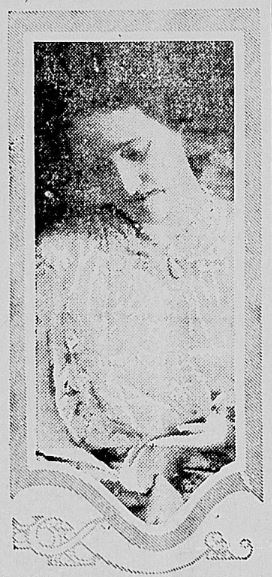
Mina E. Campbell (1862-1942) [Sioux Falls, Minnehaha County] participated in the state suffrage convention in Aberdeen in June 1909 and was named to the finance committee for the state Votes for Women campaign in November 1909, becoming secretary of the expenditure committee. She was also treasurer of the Minnehaha County Equal Suffrage Association in 1909; was involved with the Sioux Falls suffrage league in 1910-1914; was treasurer for the S.D.U.F.L. in 1912-1913; was elected an alternate delegate to the NAWSA convention in 1910; was a county chair for campaign work in 1914, assisted by Minnie Sheldon; was on the advisory board for the S.D.U.F.L. from 1915 to 1917; and served as county campaign chair in 1918 [Argus-Leader (Sioux Falls, SD), November 5, 1909, September 30, 1910, July 26, 1912, September 19, 1914, September 15, 1923, March 30, 1927; RD06574, correspondence 1909, and RD06882, correspondence 1914-1933, Breeden papers USD; Jones to Pyle, August 17, 1916, RD07467, correspondence 1910-1916, Pyle papers USD; Black Hills Union and Western Stock Review (Rapid City SD), April 29, 1910; Saturday News (Watertown SD), August 1, 1912; Mitchell Capital (SD), August 1, 1912; Pickler to Woman’s Journal c/o Agnes E. Ryan, December 1, 1913, Gen. Corr., 1839-1961, mss34132, box 28; reel 19, NAWSA Records, Library of Congress; Argus-Leader (Sioux Falls, SD), September 19, 1914; Forest City Press (SD), November 24, 1915, December 20, 1916; Sisseton Weekly Standard (SD), October 6, 1916]. After suffrage passed, she was made an honorary member of the Minnehaha County League of Women Voters in 1921 [Argus-Leader (Sioux Falls, SD), June 9, 1921, September 15, 1923]. Her husband was Lewis C. Campbell, her maiden name was Nicholson, and for a time she worked in her husband’s insurance office as cashier [1910 U.S. census for Sioux Falls; 1915 and 1916 Sioux Falls City Directories (Polk-Avery Directory Co.), 95, 100; “Margaret (Mina/ Myra) E. or L. Nicholson Campbell,” Find-a-Grave.com].
Dora Cassem (1867-1942) [Mitchell, Davison County] was active in the local suffrage movement from 1913 to 1918, and was also involved with the Methodist church Ladies Aid, the Federated Women’s Clubs, the Mitchell Political Economy club, and was very active with the local and district WCTU, serving as president of one or the other from 1908 to 1914.
Emmer M. Cook (1848-1925) [Huron, Beadle County] was involved with the South Dakota Universal Franchise League as early as 1912 and served as its treasurer from 1916 to 1918 [Mitchell Capital (SD), August 1, 1912; Dorinda Reed, The Woman Suffrage Movement in South Dakota, p119; Pyle Papers, Box 2, Correspondence, 1918, April 15-22, RD08744, Richardson Collection-USD]. Cook was also active in the Women’s Relief Corps in 1896-1900 and was an governor-appointee to the State Board of Investigations of the Penal and Charitable institutions from 1903 to 1912 [Hot Springs Weekly Star (SD), June 12, 1896; July 13, 1900; November 6 and 13, 1903; Mitchell Capital (SD), October 26, 1900; March 24, 1910; Pierre weekly free press., March 26, 1908; Saturday News (Watertown SD)., March 28, 1912].
Simeon H. Cranmer (1853-1943) [Huron / Aberdeen] advocate for suffrage at the 1885 statehood convention and president of the Aberdeen Equal Suffrage Association in 1890.
Emma A. Cranmer (1858-1937) [Huron / Aberdeen] was a lecturer, lobbyist, and president for the state suffrage association in 1891-1909, president of SD Women’s Christian Temperance Union in 1892-1895, and a national suffrage lecturer in 1898.
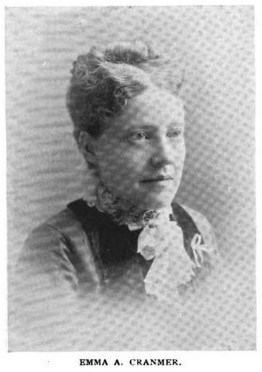
Alice Lorraine Daly (1883-1945) [Madison, Lake County] was the chair of the Lake County suffrage association and member of finance/fundraising department of SD Universal Franchise League in 1918.
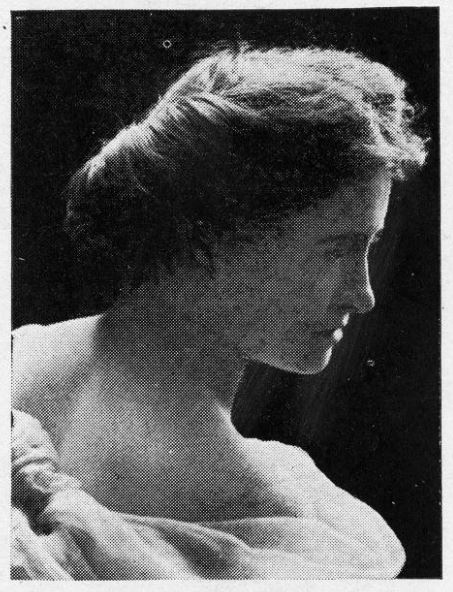
Emma Smith DeVoe (1848-1927) [Huron, Beadle County] was lecturer and organizer for the SD Equal Suffrage Association (ESA) and assistant state superintendent of the Franchise Department for SD Women’s Christian Temperance Union in 1889-1890. The DeVoe house was considered a headquarters for the 1889-1890 campaign.
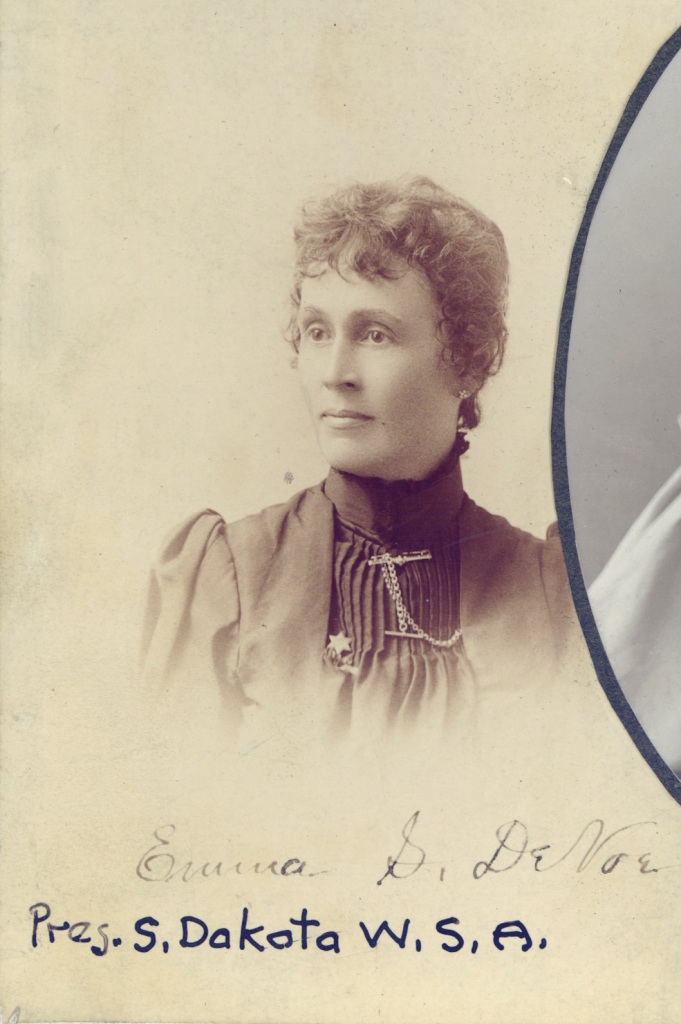
J.H. DeVoe (1846-1928) [Huron, Beadle County] served on the executive committee in 1889 and as superintendent of music in 1890 for the SD Equal Suffrage Association. He was also founding president of the Beadle County ESA in 1890.
Mary A. Dilger (1865-1945) [Rapid City, Pennington County] served as recording secretary of the SD Universal Franchise League from 1912 to 1914, and was vice-president of the Rapid City franchise league in 1914 and 1918 [Argus-Leader (Sioux Falls, SD), July 26, 1912; Saturday News (Watertown SD), August 1, 1912; Mitchell Capital (SD), August 1, 1912; Pierre Weekly Free Press (SD), July 10, 1913; RD04998, Constitution of the South Dakota Universal Franchise League, and Warren to Pyle, September 7, 1918, RD10913, Box 3, Correspondence, 1918, September 1-9, Pyle Papers USD; Woman’s West of the River Suffrage Number, Rapid City Daily Journal (SD), October 26, 1914, pg. 1 and 4]. Mary A. Chausse was born in Elk Point, D.T. in 1865, married merchant Charles Matthew Dilger in 1880, and ran a dressmaking parlor in Rapid City [The Black Hills Union and Western Stock Review (Rapid City SD), September 9, 1904; Kingsbury, History of Dakota Territory, vol. 4 (1915), 183-184; “Mary A. Chausse Dilger” Find-a-grave.com].
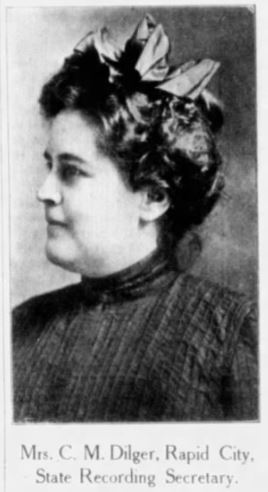
Alonzo J. Edgerton (1827-1896) [Sioux Falls, Minnehaha County] was considered one of the “important” men who supported suffrage in the movement’s early years [Ceclia M. Wittmayer, “The 1889-1890 Woman Suffrage Campaign: A Need to Organize,” South Dakota History (1982), 200]. In a 1904 history of the state, he was called “a pronounced advocate of woman suffrage and appointed a woman official stenographer of his judicial district, the best salaried office within his gift.” [“History of Woman Suffrage in South Dakota,” from Doane Robinson, History of South Dakota, vol. 1 (1904), 597-604]. Alonzo Jay Edgerton was a Civil War veteran who came from Minnesota, where he was politically prominent, to Dakota Territory in 1881 when he became the presidential appointee for chief justice of the Supreme Court of Dakota Territory [“Alonzo J. Edgerton,” Wikipedia; “Alonzo Jay Edgerton,” Find-a-grave.com; SD Historical Society Foundation, “The Man Who Would Have Been Senator” (November 2014)]. He also served as president of the constitutional convention in 1885 and was appointed a federal judge [“Alonzo J. Edgerton,” Wikipedia; Kingsbury, History of Dakota Territory, vol. 3 (1915), 924].
“Edgerton, said in his Fourth of July oration here: ‘How necessary it is for us to elect only good and honest men to office! To do this, woman likewise must act her part in the labor of arresting the advance of crime and corruption, although through timidity the politician is slow to invest her with the higher duties and obligations of American citizenship.'”
Hustad/Anthony, History of Woman Suffrage 3 (1886), 666.
Mary E. Elson (1847-1911) [Huron, Beadle County] was one of the group of who invited people to a meeting at the Baptist church in Huron to help plan the state’s first suffrage convention and signed the press call for the convention itself [“Page 06 : A Special Meeting,” “Page 06 : The Convention Called,” and Huron Times, February 28, 1890, Emma Smith DeVoe: 1880-1890 (Scrapbook D), WSL Manuscripts, MS 171, Box 10; Wessington Springs Herald (SD), March 14, 1890; Madison Daily Leader (SD), June 24, 1890; Kimball Graphic (SD), July 4, 1890]. In February 1890, she spoke at the celebration held in honor of Susan B. Anthony’s 70th birthday [Huron Daily Times (SD), February 17, 1890, “Page 26 : Susan B. Anthony Honored,” Emma Smith DeVoe: 1880-1890 (Scrapbook D), WSL Manuscripts, MS 171, Box 10]. She accompanied Emma DeVoe to speak on suffrage in Cavour in February 1890 [Daily Huronite (SD), February 6, 1890, “Page 65 : Entire Page,” Emma Smith DeVoe: 1880-1890 (Scrapbook D), WSL Manuscripts, MS 171, Box 10]. In March 1890, she was elected secretary of the Beadle County Equal Suffrage Association [Sturgis Advertiser (SD), March 13, 1890; Hot Springs Star (SD), March 14, 1890; Wessington Springs Herald (SD), March 14, 1890]. She wrote a suffrage column for the Huron Herald Democrat [“Page 27 : Among the Workers,” Emma Smith DeVoe: 1880-1890 (Scrapbook D), WSL Manuscripts, MS 171, Box 10]. In 1892, she was elected a member of the state executive committee in 1892 at the state convention in Huron [The Herald-Advance (Milbank SD), January 1, 1892]. Mary Rathbun married J.E. Elson in 1864 [“Col Jerry E Elson,” Find-a-grave.com citing The Daily Huronite (SD), May 31, 1897]. Mary Elson was highly active in the Woman’s Relief Corps [Turner County Herald (Hurley SD), January 26, 1911; “Mary E Elson,” Find-a-grave.com].
Rev. Elisha English (1851-1891) [Huron, Beadle County] signed the press call for a state suffrage meeting in Huron in 1889 and spoke at the county suffrage convention in 1890 [Page 06 : The Convention Called and Huron Times, February 28, 1890, Emma Smith DeVoe: 1880-1890 (Scrapbook D), WSL Manuscripts, MS 171, Box 10]. As “suffragist and brother-in-law” to the Women’s Christian Temperance Union, English made brief remarks at the Beadle County Fair’s Woman’s Day in 1889 [Page 09 : South Dakota — Equal Suffrage Work, Emma Smith DeVoe: 1880-1890 (Scrapbook D), WSL Manuscripts, MS 171, Box 10]. He also gave public lectures on “Women and the Ballot” and “Woman in Politics” in Mitchell and Brookings [Mitchell Daily Republican (SD), January 11, 1890; The Daily Plainsman (Huron, SD), February 26, 1890]. Before the vote on suffrage in 1890, English moved to Greeley, Colorado, saying that he “wished that he might have voted for equal suffrage in this state: but rejoiced that he had been allowed to assist in gaining constitutional prohibition.” [The Daily Plainsman (Huron, SD), October 13, 1890]. English had come to the First Baptist Church in Huron from Grinnell, Iowa, in 1886. From his position at the Baptist church, he also had a great influence on other early advocates like the Devoes and the Barkers who were church members [Wessington Springs Herald (SD), October 29, 1886; Jennifer M. Ross-Nazzal, Winning the West for Women: The Life of Suffragist Emma Smith DeVoe (Seattle: The University of Washington Press, 2011), 16, 21]. English had married Florence Trumbull in 1883 [“Rev Elisha English,” Find-a-grave.com].
Lorena King Fairbank (1874-1979) [Huron / Sioux Falls] served as treasurer and on executive “committee of five” for the SD Votes for Women Campaign in 1909-1912. In 1912, she was a member of the national committee. In 1917, she was elected one of three vice-chairs of the state board of the Congressional Union for Woman Suffrage.
Hattie E. Fellows (1866-1956) [Sioux Falls, Minnehaha County] was chair of the state board of the Congressional Union for Woman Suffrage when it was organized in January 1917 and continued in the role through 1920 [The Suffragist (National Women’s Party) (January 24, 1917), 8; Suffragist 8(5) (June 1920), 108]. In October 1917, Fellows made the arrangements for national organizers Jane Pincus and Mabel Vernon to speak at the Quaker Tea Room and presided over the meeting [The Suffragist (National Women’s Party) 5(94) (November 10, 1917), 8; Argus Leader (Sioux Falls SD), November 1, 1917]. In 1920, she represented South Dakota at a women’s conference in Chicago to discuss the continuing work of getting the final states to ratify the federal suffrage amendment [Argus Leader (Sioux Falls SD), June 2, 1920]. Harriet Le Fever married druggist Allen R. Fellows in 1888 [Kingsbury, History of Dakota Territory, vol. 4 (1915), 827; “Harriet E. LeFever Fellows,” Find-a-grave.com; Jared Fellows, “Biography of Harriet E. Fellows, 1866-1956,” Biographical Database of Militant Suffragists, 1913–1920. Database assembled and introduction by Jill Zahniser].
“Mrs. A.R. Fellows,” photograph by Edmonston (Washington D.C.), LOC, Location: National Woman’s Party Records, Group II, Container II:274, Folder: Individual Photographs Nos. 119-133 “F”, Cropped version of the photograph published in The Suffragist 8(5) (June 1920), 98.
Edith Medbery Fitch (1876-1938) [Hurley, Turner County] was vice-president of the SD Equal Suffrage Association in 1909 and publicity/press committee chair in 1910; southeast district organizer in 1911, and district auditor in 1912-1913 and district press chair in 1914 for SD Universal Franchise League.
Kate Uline Folger (c1852-1896) [Watertown, Codington County] was corresponding secretary of the South Dakota Equal Suffrage Association from 1894 to her death in 1896 [Union County Courier (Elk Point SD), September 20, 1894; Dakota Farmers’ Leader (Canton SD), September 21, 1894; The Independent (Hawarden, IA), September 14, 1894; The Herald-Advance (Milbank SD), September 6, 1895, July 31, 1896; Pierre Weekly Free Press (SD), September 19, 1895; Turner County Herald (Hurley SD), September 26, 1895; Rachel Foster Avery, ed., Proceedings of the 28th Annual Convention of the NAWSA (Philadelphia: Alfred J. Ferris, 1896), 158]. At the 1895 suffrage convention, she gave the secretary’s report, led a drill, and led devotions in the afternoon [Sioux City Journal (IA), September 6, 1895]. She was also secretary of the South Dakota W.C.T.U. in 1894 [Dakota Farmers’ Leader (Canton SD), September 21, 1894]. In 1896, Folger passed away of heart disease in Watertown [Turner County Herald (Hurley SD), July 30, 1896; The Herald-Advance (Milbank SD), July 31, 1896; et al.].
Anna Simmons — “In the death of our Corresponding Secretary we lost much that cannot be told in words.”
Avery, ed., Proceedings of the 29th Annual Convention of NAWSA at Des Moines, Iowa, January 26-29, 1897 (Philadelphia: Alfred J. Ferris, 1897), 93.
Marie J. Gaston (1845-1902) [Deadwood, Lawrence County] was active in local suffrage activity and one of the active field organizers in the northern Black Hills during the 1890 suffrage campaign, and remained involved in 1896. Gaston was a “pioneer” of Deadwood and an active member in the community. She was active with the W.C.T.U., the founder and first president of the Round Table Club (a woman’s literary club), treasurer of the local Board of Education, and the initiator and first librarian for the Deadwood Public Library. She was also one of the four “lady managers” from South Dakota to organize the state’s exhibits at the World’s Fair in Chicago in 1893.
See also: Kaija Swisher, “Deadwood’s First Librarian” Rapid City Journal / Black Hills Pioneer (May 25, 2018); and Tim Velder, Northern Hills Bureau, “Women keep the tradition of Round Table Club alive,” Rapid City Journal (August 23, 2004).
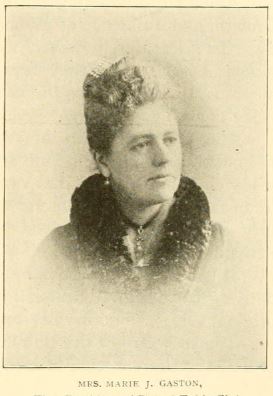
May P. Ghrist (1867-1925) [Miller, Hand County] was lecturer and vice-president of the South Dakota Universal Franchise League and was president of the Hand County Equal Franchise League from 1915 to 1918.
Nana E. Gilbert (1867-1918) [Salem, McCook County] was supportive of suffrage in her newspaper in 1909 and became chair of the state press committee in the first half of 1910 before illness prevented her from continuing the work. In 1918, she was again willing to serve on the county suffrage campaign committee, but she became ill again and passed away on October 31, 1918, only days before the suffrage vote carried in South Dakota.
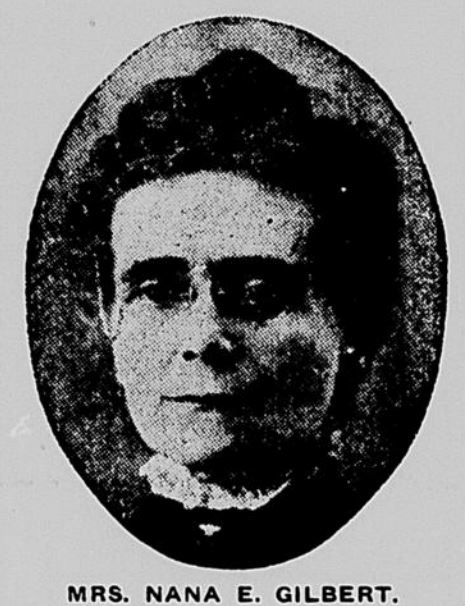
Alice R. Bower Gossage (1861-1929) [Rapid City, Pennington County] served as a second vice-president of the South Dakota Equal Suffrage Association in 1892, on the publicity committee of the Votes for Women Campaign in 1910, coordinated a 1914 special feature of the Rapid City Daily Journal about the suffrage campaign, and continued publishing suffrage material through 1918. In October 1918, she wrote to Mabel Rewman about how much nursing local women were having to do for the epidemic. In November, she reported to Pyle on the local election results [Mitchell Capital (SD), December 9, 1892; Husted, History of Woman Suffrage, v.1 (1881), 559; Woman’s West of the River Suffrage Number, Rapid City Daily Journal (SD), October 26, 1914; Warren to Pyle, September 7, 1918, RD10913, Box 3, Correspondence, 1918, September 1-9, Rewman to Pyle, October 18, 1918, RD11407, 1918, October 17-22, and Gossage to Pyle, November 6, 1918, RA11708, Box 4, Correspondence, 1918, November 1-7, Mamie Shields Pyle Papers, Richardson Collection, USD, and RD06634, Votes for Women Campaign letterhead, May 1910, Jane Rooker Breeden correspondence, 1910-05, USD].
Alice Rhoda Bower was born in Wisconsin and moved with her family to Vermillion in 1870. Her first job was working for the Vermillion Standard as a typesetter. She also worked for the Dakota Republican and the Parker New Era. Her family moved to Keystone in 1885 and formed the Bower Family Band. Her sister Rose Bower was also active in the suffrage movement for years. Alice Bower married Joseph B. Gossage in 1882 [“Dakota Images: Alice R. Gossage,” South Dakota History 4(4) (1974)]. They published the Rapid City Daily Journal, and, after her husband fell ill, Alice took over full management of the paper in 1890 and eventually became its main editor [Hot Springs Weekly Star (SD), July 22, 1904; Black Hills Engineer 12(4) (November 1924), 257; “Dakota Images: Alice R. Gossage“; “Rhoda Alice ‘Od’ Bower Gossage,” Find-a-grave.com; Maurine Beasley, “Recent Directions for the Study of Women’s History in American Journalism,” Journalism Studies 2(2) (2001), 218]. For her contributions to the city, a monument was erected in her memory along Skyline Drive overlooking Rapid City [“Dakota Images: Alice R. Gossage“]. Gossage was an active supporter of the temperance movement, office holder, and edited the White Ribbon Journal [Black Hills Union (Rapid City, SD), August 30, 1895; Pierre Weekly Free Press (SD), September 12, 1895; Mitchell Capital (SD), September 30, 1898, September 19, 1902, September 17, 1914; Black Hills Union and Western Stock Review (Rapid City SD), October 23, 1908; Kingsbury, History of Dakota Territory vol. 3 (1915), 771].
See also:
Nelson, Paula M., ed. Sunshine Always: The Courtship Letters of Alice Bower & Joseph Gossage of Dakota Territory. Pierre: South Dakota State Historical Society Press, 2006.
Robert F. Karolevitz. With a Shirt Tail Full of Type: The Story of Newspapering in South Dakota. South Dakota Press Assn., 1982.
Historic image of the Rapid City Journal, SDSHS #2007-12-11-024.
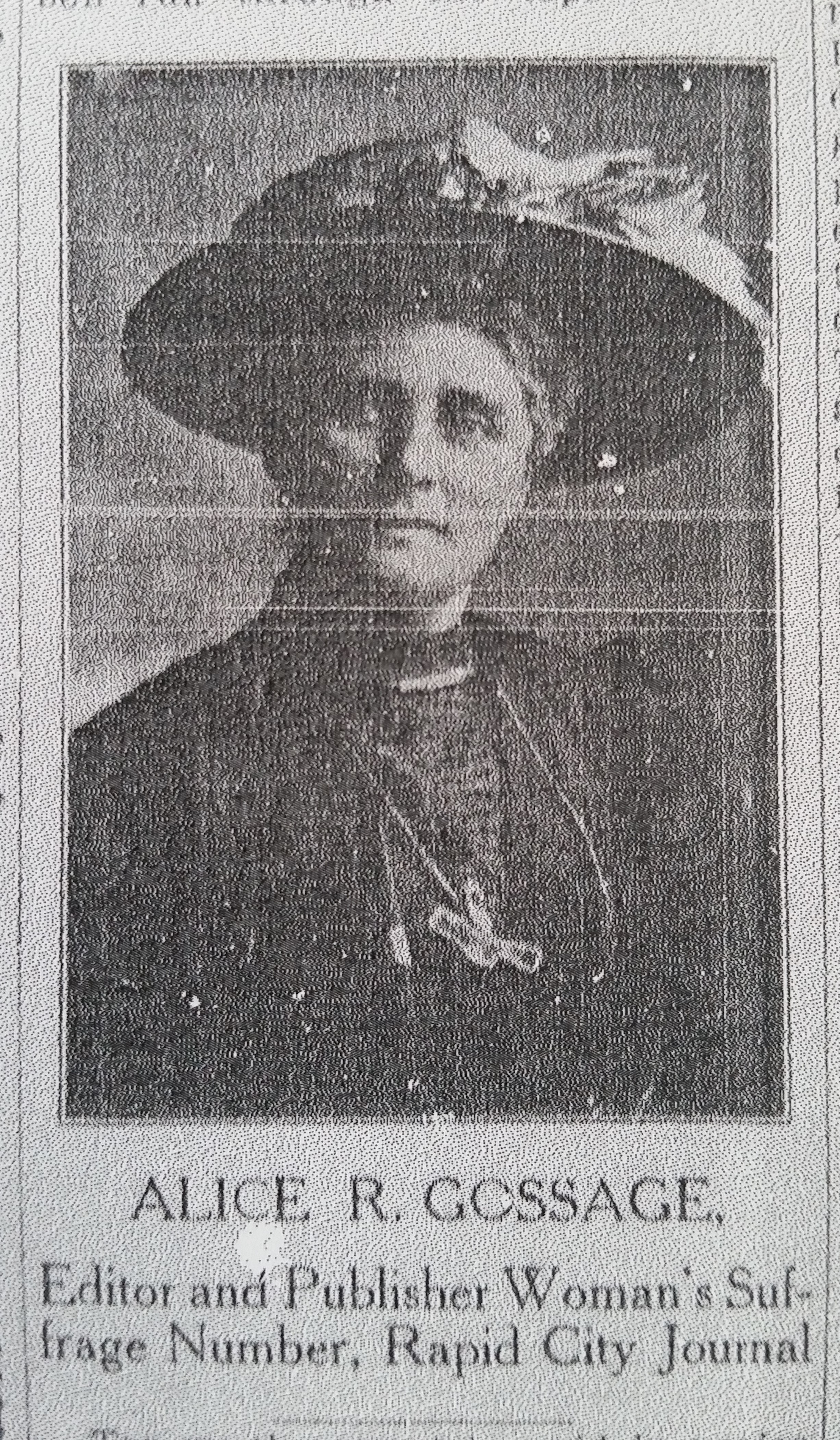
Rebecca B. Hager [Madison / Mitchell / Aberdeen / et al.] was active in the 1890 suffrage campaign as a firm supporter of the temperance movement. When the Rev. Anna Howard Shaw spoke in Madison to open the campaign, Hager made Shaw’s introduction. She served as secretary of the Lake County Equal Suffrage Association (E.S.A.) and vice-president of the Madison (city) E.S.A., striving to make arrangements for campaign speakers to give speeches in the county. She was an active participant in the 1890 state suffrage conventions in Huron and Mitchell–named as one of the “specially effective” state participants at the Mitchell convention by Henry Blackwell of Boston. In October 1897, Hager accompanied visiting organizers Gregg, Moore, and Catt to conduct the county suffrage convention in Vermillion [Madison Daily Leader (SD), April 21, 1890, September 2, 1890; Wessington Springs Herald (SD), September 12, 1890; Vermillion Plain Talk (SD), October 15, 1897; Page 44 : The Convention, Emma Smith DeVoe: 1880-1890 (Scrapbook D), WSL Manuscripts, MS 171, Box 10; The Woman’s Journal (Boston MA), September 6, 1890, p.284, Schlesinger Library, Harvard University; Mary Kay Jennings, “Lake County Woman Suffrage Campaign in 1890,” South Dakota History (1975), 392-398, 405-406; Jennifer M. Ross-Nazzal, Winning the West for Women: The Life of Suffragist Emma Smith DeVoe (Seattle: The University of Washington Press, 2011), 53].
IN HER OWN WORDS: In a news article by editor F.L. Mease about women’s views on suffrage, Hager’s response was:
“It is surely just for women to have the right of franchise, as the injustice of ‘taxation without representation’ was settled in this country over a hundred years ago. I think it eminently proper for all loyal Americans to have the privilege of voting. Women as a class are more patriotic than men, and our nation needs more ballots from citizens who prize country above self.”
Quoted in Jennings, “Lake County Woman Suffrage,” 394.
As a temperance worker, Hager spoke on suffrage at W.C.T.U. events and served as state superintendent of their Franchise Department [Press and Daily Dakotaian (Yankton SD), January 27, 1887; Madison Daily Leader (SD), November 21, 1892; Jennings, “Lake County Woman Suffrage,” 398, 408]. She also held multiple other officers for the W.C.T.U. and was active with Chautauqua programs [For example: Wessington Springs Herald (SD), August 6, 1886; Madison Daily Leader (SD), June 18, 1898, May 29, 1899; Mitchell Capital (SD), April 29, 1898, August 4, 1899, December 12, 1902; Kingsbury, History of Dakota Territory, vol. 3 (1915), 771–772].
Rebecca Braucht had married Clarence E. Hager in 1877, and they came to Dakota Territory as missionaries for the Methodist Episcopal church in 1881. They first went to Mitchell and later spent time in Yankton, Madison, Aberdeen, Vermillion, Rapid City, Spearfish, and Kennebec [Press and Daily Dakotaian (Yankton SD), October 26, 1887; Mitchell Capital (SD), October 29, 1897, November 15, 1917; Madison Daily Leader (SD), April 24, 1914; Northwestern Christian Advocate 70 (June 21, 1922), 701; Pyle to Williamson, February 16, 1918, RD07862, correspondence 1918-02-09 to 1918-02-18, Pyle papers USD]. A house of theirs in Mitchell at 321 W Fourth Ave is a contributing resource within the Mitchell West Central Residential Historic District, established in 1999 [SD SHPO records DV003000049].
Nettie C. Hall (1841-1908) [Wessington Springs, Jerauld County] was an organizer and lecturer as superintendent of election work SD Equal Suffrage Association 1890, and lectured for suffrage in 1891 and 1893.
Sophia M. Harden (1846-1921) [Woonsocket / Huron] was vice-president of the SD Equal Suffrage Association (ESA) from 1890 to 1892.
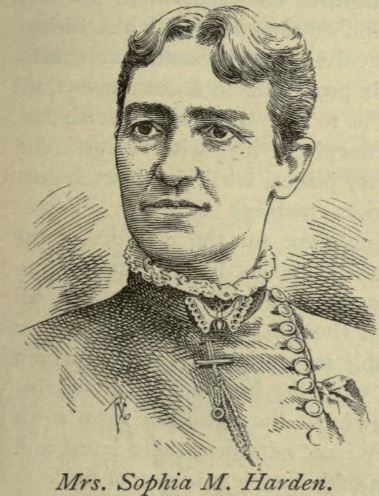
Margaret E. Hendricks [Sioux Falls, Minnehaha County] was second vice-president of the South Dakota Equal Suffrage Association from 1909-1910 [Johnson to Breeden, October 13, 1909, RD06572, correspondence 1909, Breeden papers USD; Argus-Leader (Sioux Falls, SD), November 3, 1909, November 5, 1909; Pierre Weekly Free Press (SD), December 1, 1910]. She also served as secretary of the Minnehaha County Equal Suffrage Association [Johnson to Russell, November 1, 1909, RD06574, correspondence 1909, Breeden papers USD]. She supported the suffrage campaign also through her role as president of the Ladies’ History Club and an officer of the S.D. Federation of Women’s Clubs, and she was involved with the Ladies’ Aid of the First Methodist Episcopal Church [Argus-Leader (Sioux Falls, SD), May 11, 1907, November 3, 1909; The Herald-Advance (Milbank SD), September 20, 1907; Saturday News (Watertown SD), October 28, 1910; Campbell to Breeden, RD06705, correspondence 1910-06, Breeden papers USD]. Hendricks was at the center of controversies amongst the leadership of the state suffrage association [Campbell to Breeden, RD06668, and Mrs. J.L. White to Breeden, May 26, 1910, RD06666, correspondence 1910-05; Campbell to Breeden, RD06705, correspondence 1910-06; Hendricks to Breeden, December 9, 1910, RD06840 to RD06849, correspondence 1910-11 to 1910-12, , Breeden papers USD].
IN HER OWN WORDS:
At a reception given by the Ladies’ History Club at the time of the 1909 state suffrage convention in Sioux Falls, Hendricks made the introductions for the suffrage speakers who were the guests of honor. In the introduction, “Mrs. Hendricks said that her understanding of the object and aim of women’s clubs was toward the betterment of humanity in general and of women in particular, and that, whether we were all agreed in every line of work undertaken with this object in view, we were bound to admire, acknowledge and respect, all earnest endeavor and ability of sister workers.”
Argus-Leader (Sioux Falls, SD), November 3, 1909.
Ruth Bowman Hipple (1873-1962) [Pierre, Hughes County] was editor of the South Dakota Messenger from 1912 to 1914, and served on the legislative committee and was the press department chair from 1916 to 1918 for the SD Universal Franchise League and into 1921 for the SD League of Women Voters.
Florence Jeffries (1854-1925) [Fort Pierre, Stanley County] superintendent of contest work 1897, corresponding secretary and national delegate 1906-1909, organizer 1910 for SD Equal Suffrage Association
Lydia B. Johnson (1875-1949) [Fort Pierre, Stanley County] president SD Equal Suffrage Association 1909-1910, lecturer and lobbyist 1912-1918
Philena Everett Johnson (1841-1911) [Highmore, Hyde County] lobbying 1889; president SD Equal Suffrage Association 1890-1891, vice-president SD Political Equality Association 1900-1901, state superintendent for franchise and legislation SD Women’s Christian Temperance Union 1905-1910, died in 1911 after contracting pneumonia while lobbying for suffrage at the state capitol
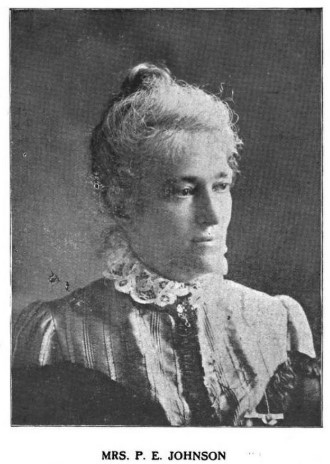
Della Robinson King (c1868-1933) [Scotland, Bon Homme County] superintendent of literature, editor of suffrage publication the South Dakota Messenger and author of Thoughts of a Thoughtful Woman 1898.
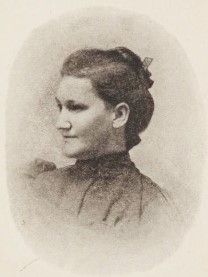
Belle Pelton Leavitt (c.1874-1963) [Sioux Falls, Minnehaha County] was president of the Minnehaha County Franchise League and then the county League of Women Voters from 1915 to 1953, and was a member of the state L.W.V. board in 1919. She served as delegate to state suffrage meetings and conventions in 1915-1916, and delegate to national L.W.V. conventions in 1920, 1922, and 1923.
Rev. Henrietta C. Lyman (1852-1928) [Pierre, Hughes County] was a Congregational minister and for the suffrage movement was treasurer, lecturer, and lobbyist for the South Dakota Equal Suffrage Association in 1895-1896, and returned to the state after moving to Wisconsin in 1910 to campaign again for a South Dakota amendment.
Minnie Oleson (1869-1953) [Deadwood, Lawrence County] was one of the vice-presidents elected for the S.D. Equal Suffrage Association in June 1909, was on the state campaign’s finance committee, and was elected in April 1910 to be on the list of alternate state delegates for the national suffrage convention in Washington D.C. She was active with the Deadwood suffrage association as treasurer and the Lawrence County association in 1917-1918 as well [Pierre Weekly Free Press (SD), June 24, 1909, December 1, 1910; RD06572, correspondence 1909, and RD06598, correspondence 1910, Breeden papers USD; Black Hills Union and Western Stock Review (Rapid City SD), April 29, 1910, May 6, 1910; Daily Deadwood Pioneer-Times (SD), March 22, 1917, January 22, 1919]. Wilhelmina “Minnie” Magdalin Geis was born in Dayton OH in 1869 and came to Deadwood as a child. In 1892, she married mining operator, Andrew H. Oleson. She was an active clubwoman, serving as chair of the legislative committee of the S.D. Federation of Women’s Clubs and chair of the household economics committee of the Black Hills F.W.C. She advocated for (“mothered”) a child labor bill in the state legislature. She worked with the Society of Black Hills Pioneers, the Y.M.C.A., and advocated for war gardens during WWI. In the 1940s, she served multiple times as a ward election judge. She later lived briefly in New York City and Seattle, but returning to Deadwood [John William Leonard, ed., Woman’s Who’s Who of America: A Biographical Dictionary of Contemporary Women of the United States and Canada 1914-1915 (New York: American Commonwealth Company, 1914), 609; Kingsbury, History of Dakota Territory, vol. 3 (1915), 776; Black Hills Union and Western Stock Review (Rapid City SD), June 15, 1907; Hot Springs Weekly Star (SD), January 30, 1914; Weekly Pioneer Times Mining Review (Deadwood, SD), November 1, 1917; Madison Daily Leader (SD), September 2, 1918; Daily Deadwood Pioneer-Times (SD), September 14, 1918, September 13, 1924, October 15, 1942, August 7, 1945, April 3, 1946, July 17, 1949, October 24, 1949, January 21, 1953, January 25, 1953; 1900-1935 US and state censuses; “Wilhelmina Geis Oleson,” Findagrave.com].
Rev. Nina D. Pettigrew (1858-1940) [Belle Fourche, Butte County] was on the state legislative committee and president of West River district and on the state campaign committee in 1909-1910 for the S.D.E.S.A., and then was president of northwest campaign district in 1913-1914 and lecturer and member of state advisory board in 1916-1918 for the S.D.U.F.L.
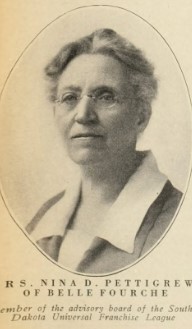
Alice M.A. Pickler (1848-1932) [Faulkton, Faulk County] lobbied state legislature 1887, 1889, 1907; delegate to national convention 1889 and 1891; state superintendent of franchise 1889 and 1916, and lecturer 1891 WCTU; executive committee 1890-1892, vice-president 1897-1898, president 1907-1909, campaign committee 1910 SD Equal Suffrage Association; vice-president 1912-1913 SD Universal Franchise League; circulation/Suffragist chair 1917 SD branch of National Woman’s Party

John A. Pickler (1844-1910) [Faulkton, Faulk County] as a Dakota Territorial legislator introduced suffrage bill to the House in 1885, was delegate to national suffrage conventions in 1889 and 1891; and was on the campaign trail briefly in 1891.
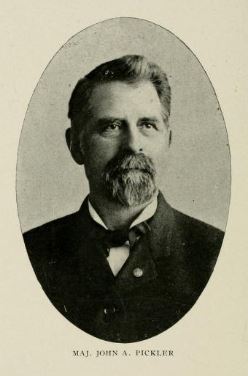
Rev. Katherine W. Powell (1860-1938) [Custer / Spearfish] served on the state campaign committee for the first part of the 1910 campaign, and, for the S.D. Universal Franchise League, was southwest district president in 1913-1914 and served on the advisory board in 1915-1917.
Rev. Helen G. Putnam (1840-1895) [Huron / Jamestown ND] supported the organization of the South Dakota E.S.A. in the fall of 1889 and then, even though she had moved to Jamestown, visited five South Dakota counties to campaign for the 1890 amendment and spoke at the Mitchell convention that August.
Mamie Shields Pyle (1866-1948) [Huron, Beadle County] was president 1910-1912 of the SD Equal Suffrage Association and then president, organizer and lobbyist 1912-1919 for the SD Universal Franchise League. After the success of the state amendment, she was elected presidential elector in 1920 and became president for the SD League of Women Voters from 1919 to 1926.
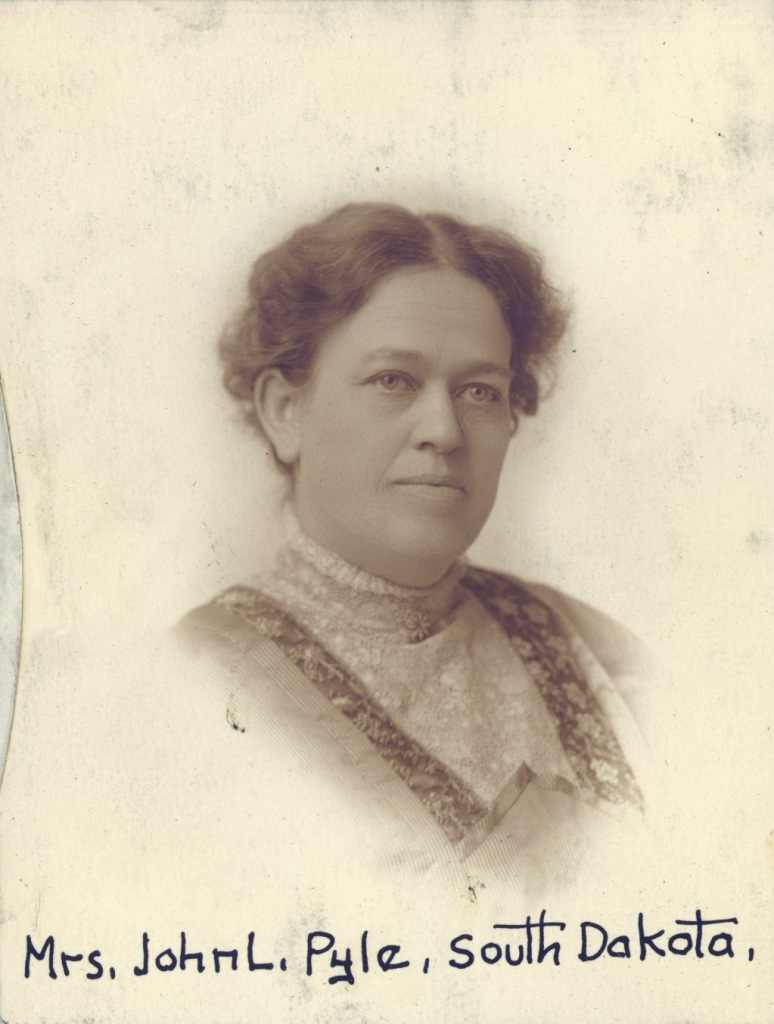
Luella A. Ramsey (1858-1921) [Woonsocket, Sanborn County] was involved with advocating for suffrage from 1897 to 1914, largely through the Women’s Christian Temperance Union (W.C.T.U.), of which she was state president from 1895 to 1909 and then honorary president from 1909 to 1921. From 1897 to 1914, she participated in state suffrage conventions and spoke on suffrage for W.C.T.U. events and conventions. In 1901-1909 for the W.C.T.U., Ramsey lobbied for suffrage at the state legislatures.
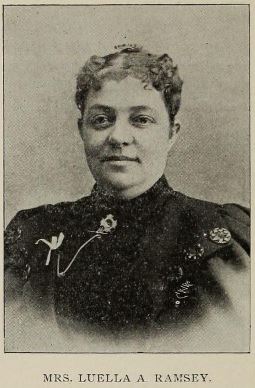
Samuel A. Ramsey (1856-1924) [Woonsocket, Sanborn County] was the first president of the South Dakota Equal Suffrage Association at its organization in October 1889 and spoke during the 1909 state suffrage convention.
Dorothy M. Rehfeld (1884-1934) [Aberdeen, Brown County] was on the state board of the League of Women Voters as chair for Committee on Uniform Laws Concerning Women in 1919-1930. Rehfeld was also a state delegate to the Chicago convention in 1920 and one of the U.S. delegates to the 8th International Woman’s Suffrage Alliance in Geneva in 1920.
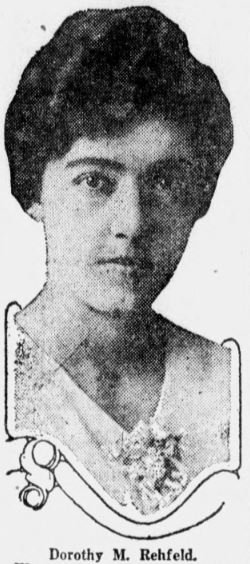
Mabel Rewman (1875-1969) [Deadwood, Lawrence County] was on the SDUFL legislative committee 1915-1917, lecturer 1916-1918, and state finance chair 1918. She was also on the state board of the League of Women Voters in 1919.

Sarah Ann Richards [Carpenter] (1838-1916) [Pukwana, Brule County] was treasurer of the South Dakota Equal Suffrage Association from October 1889 to November 1890, and was described as having “fine executive and financial ability.” In the leadership shake-up of July 1890, she retained her position, despite not even attending the Huron convention. After the campaign, at the state meeting in November 1890, she was one of three people elected to attend the national suffrage convention (but I don’t know if she went) [Wessington Springs Herald (SD), October 25, 1889, July 11, 1890; Daily Plainsman (Huron, SD), July 10, 1890; Kimball Graphic (SD), November 14, 1890; The Union Signal, 12/19/1889, Page 66, Emma Smith DeVoe: 1880-1890 (Scrapbook D), WSL Manuscripts, MS 171, Box 10; The Woman’s Journal (Boston MA), November 2, 1889, p.348, and January 18, 1890, p.17, Schlesinger Library, Harvard University]. Richards was born in Connecticut in 1838 and homesteaded in Brule County, proving up in 1891. She managed a 600-acre farm by Pukwana. In 1886, she was a vice-president for the Brule County Tree Planters’ Association. She also campaigned for Alice Sanborn in an election for county superintendent of schools (quote below) and gathered petitions for prohibition that she presented to the county commission. In 1887 and 1892, she was a speaker at local Fourth of July events. In December 1892, in Dubuque IA, she married a millionaire Chicago businessman, William Oscar Carpenter. Carpenter had made money as a merchant and miner in 1850-1856 in California, and starting in 1857 as a merchant and lumberman in Wisconsin–with a sawmill operation in Menominee MI and pine timberlands in Louisiana, plus an interest in iron mining in the Menominee area. With her new financial resources, she and William expanded and added an extensive irrigation system with artesian well, ditches, and reservoir to her stock farm in Brule County, although they lived in Chicago and had a summer residence in Menominee MI. Eventually, the Carpenter-Sanborn stock farm included 14,000-15,000 acres, breeding Durham and Angus cattle and Percheron horses. William died in 1905. Many of the cattle were sold off in 1907, new improvements faced severe damage after a 1908 tornado, and then the remaining 6,500 acres of the farm were broken up and sold off in 1911. Sarah was ill for a number of years, even paralytic, and her sister Eliza E. Sanborn at one point petitioned for a legal guardian to be appointed to oversee her medical care. She passed away in January 1916 in Milwaukee and was buried with her husband in Chicago [Kimball Graphic (SD), May 28, 1886, June 25, 1892, December 10, 1892, February 24, 1894, September 28, 1895, December 28, 1895; Mitchell Daily Republican (SD), November 10, 1886; Mitchell Capital (SD), April 22, 1887, July 8, 1887; Pierre Weekly Free Press (SD), October 3, 1895, November 30, 1905, May 18, 1911; Minneapolis Journal (MN), August 8, 1903; Madison Daily Leader (SD), November 23, 1905; Dakota Chief (Gann Valley SD), July 25, 1907; The Herald-Advance (Milbank SD), May 29, 1908; Osceola County Democrat (Reed City MI), May 27, 1908; Argus-Leader (Sioux Falls, SD), June 30, 1908; Dakota Huronite (SD), July 9, 1908; Alma Record (MI), February 17, 1916; The Woman’s Journal (Boston MA), January 18, 1890, p.17, Schlesinger Library, Harvard University; Alvah L. Sawyer, A History of the Norther Peninsula of Michigan and Its People, vol. 2 (Chicago: Lewis Publishing Co., 1911), 688-689; “William Oscar Carpenter” and “Sarah A. Richards Carpenter,” Findagrave.com; BLM-GLO Records, Iowa Marriage Records, and 1900 U.S. census, via Ancestry.com].
“Together they went about the county getting acquainted with the voters. It soon began to be whispered by the knowing ones that they were making a most effective canvass, gaining friends everywhere. These ladies went with their own team, which they hitched and unhitched, harnessed and unharnessed, and fed and watered with their own hands. Such pluck and independence captivated the rural voters…. Never did cause or candidate have an abler or more persuasive champion than was Miss Richards. Her eloquence silenced all objections. She became so identified with the cause that people became to regard her as a candidate as well as Miss Sanborn”
Mitchell Daily Republican (SD), November 10, 1886.Richards “is not yet considered to have apolitical opinion but when she has the right to express her ideas by a vote she will be found on the side of ‘progress and purity’ every time.”
Wessington Springs Herald (SD), November 15, 1889.“For many years she was a manager of important business enterprises in Chicago and later has demonstrated, her ability to conduct successfully business matters amid the great uncertainties of pioneer life. She brings to the cause of equal suffrage in our state, mature business qualities which it is the privilege of few to possess.”
Daily Plainsman (Huron, SD), April 8, 1890.
Martha Dutton Scott (1847-1924) [Sioux Falls, Minnehaha County] was a member of the national executive committee for the S.D. Equal Suffrage Association in the 1909-1910 campaign. During that campaign, she was an active participant in the November 1909 convention, was elected a delegate to the 42nd NAWSA convention, distributed campaign literature to men on construction sites and quarry workers in East Sioux Falls, and helped the rummage sale held in Sioux Falls to raise funds for the state headquarters office downtown. In 1918, she signed the citywide suffrage petition that was printed in the Argus Leader [Pierre Weekly Free Press (SD), June 24, 1909; Argus-Leader (Sioux Falls, SD), November 4, 1909, November 5, 1909, September 30, 1910, November 2, 1918; Philip Weekly Review (SD), April 28, 1910; Charles Mix New Era (Wagner SD), December 2, 1910; 42nd annual report of NAWSA Convention (New York, 1910), 198; 43rd Annual Report of NAWSA Convention (New York 1911), 217; Scott to Breeden, RD06819, correspondence 1910-09 to 1910-10, Breeden papers USD]. Martha A. Dutton was born in Wisconsin and married Delos A. Scott. In about 1894, they moved from Wessington Springs to Sioux Falls. Martha Scott was also active with the Congregational church missionary society and the Ladies’ History Club [Argus-Leader (Sioux Falls, SD), January 13, 1903, April 22, 1903, July 10, 1905, April 22, 1911, December 3, 1924; Madison Daily Leader (SD), November 4, 1903; Kingsbury, History of Dakota Territory, vol. 4 (1915), 858; 1900-1920 US Census, 1903-1924 city directory, via Ancestry.com; “Martha A. Scott,” Findagrave.com].
Minnie E. Sheldon (1868-?) [Sioux Falls, Minnehaha County] was recording secretary of the SDESA in 1895-1896, one of the convention organizers in 1896, involved with a local suffrage association in 1897, state campaign headquarters secretary and lobbyist in 1910-1911, and a local organizer in 1914.
Anna R. Simmons (1848-1936) [Faulkton / Huron / Mitchell / Sioux Falls] lobbied and campaigned for suffrage in 1893-1894, was president of the SDESA from 1894 to 1900 (during which time she continued lobbying work and was a delegate to the NAWSA conventions–during one she gave testimony at a Congressional hearing), was on the SDESA’s executive committee in 1907, campaigned for suffrage through the WCTU in 1909-1916, and was made the state membership chair for the Congressional Union for Woman Suffrage in November 1917.
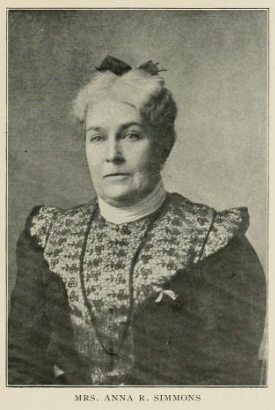
Aurilla M. Smith (1869-1934) [Deadwood, Lawrence County] was vice-president of the Deadwood Suffrage League in 1916, was one of the SD delegates to the Pan-American Women’s Congress in Baltimore in 1922, lobbied the state legislature with SD LWV in 1923, and was the SD LWV’s department chair for Child Welfare from 1923 to 1926.
Eugenie Cowles Taylor (1860-1944) [Huron, Beadle County] was active with the suffrage movement in the 1910s. She became the second vice-president of the state organization under Mamie Pyle in August 1910, and participated in the organizing meeting of the SDUFL in July 1912. With Pyle, Lorena Fairbank, and Minnie Walton, she assisted in the lobbying for a suffrage amendment at the 1911 state legislature. When Fola La Follette came to speak in Huron in July 1914, Taylor was one of the suffragist ‘dignitaries’ named in attendance. She was also a long-time acquaintance of suffragist Philena Johnson of Highmore [Saint Paul Globe (MN), November 24, 1888; Daily Huronite (Huron SD), August 25, 1910, January 16, 1911; Pierre Weekly Free Press (SD), March 2, 1911; Mitchell Capital (SD), August 1, 1912; Sisseton Weekly Standard (SD), July 17, 1914; Sioux City Journal (IA), July 14, 1914; Daily Plainsman (Huron SD), February 27, 1931]. Eugenia Cowles was born c.1860 in Iowa. In 1882, she married Alva E. Taylor, who had worked for her father in Cherokee IA, and they came to Huron. She was the sister-in-law of Dora Taylor (below). Her husband was a law partner of John L. Pyle’s, and his assistant attorney general until Pyle’s death. He later became an attorney for a farm mortgage corporation and worked from Chicago in 1892-1899, and upon returning to Huron was in practice with Coe I. Crawford and A.B. Fairbank (Lorena’s husband). In 1902, Crawford (now governor) appointed him circuit court judge, a position A.E. Taylor held until at least 1930. In Huron in 1906, she was vice-president of the Nineteenth Century Club (a woman’s club). After her death in 1944, Gladys Pyle was her executrix. The Taylors lived at 1009 Dakota Ave. S., which does not appear to be extant (by online maps) [Daily Plainsman (Huron SD), September 17, 1886, July 22, 1944; DeSmet Leader (SD), May 10, 1890; Black Hills Union (Rapid City SD), February 28, 1902, March 14, 1902; Madison Daily Leader (SD), April 10, 1902; Miller Press (SD), November 19, 1908; Brookings Register (SD), November 26, 1908; Pierre Weekly Free Press (SD), December 3, 1908; Minneapolis Journal (MN), April 24, 1906; 1880-1940 US census and IA Marriage Index, via Ancestry.com; “Eugenie C. Taylor,” Findagrave.com].
Rev. John W. Taylor (1862-1962) [Aberdeen, Brown County] participated in the June 1909 convention at the courthouse in Aberdeen and was engaged by the state organization to be one of its traveling speakers for that ballot campaign. He mainly spoke in the eastern part of the state, though did go west to Philip, Rapid City, and Hot Springs. He also spoke particularly about his experience living for nine years in Wyoming–where women already were voting. At Madison in June, it was reported that he “delighted his audience with the humor and pathos that marked the delivery of arguments or rather facts that were unanswerable” and about a talk he gave in Philip, it was said in the press that “Dr. Taylor is a forceful and logical speaker. He drove every point home in a way that left his hearers convinced. A scholarly man with fine homely insight into the great moving impulses of human nature, Dr. Taylor is eminently fitted to advance the great cause he advocates.” At the state Methodist conference in October 1910, he presented a resolution asking the pastors to support the suffrage amendment–it passed unanimously. In later October, days before the election, his church refused to have Anna Howard Shaw speak (they’d already booked Maud Ballington Booth to speak on crime and prisons), but Taylor, “who is a suffragist and has been speaking for suffrage and was pretty mad at the refusal of his church,” invited Shaw to speak after Booth, which she did [The Dakota Republican (Vermillion SD), May 19, 1910; Brookings Register (SD), May 26, 1910; Madison Daily Leader (SD), June 28, 1910, June 30, 1910; Bad River News (Philip SD), July 28, 1910; Philip Weekly Review (SD), August 4, 1910, August 11, 1910; Hot Springs Weekly Star (SD), August 4, 1910; Black Hills Union and Western Stock Review (Rapid City SD), August 12, 1910; The Herald-Advance (Milbank SD), August 26, 1910, September 2, 1910; Mobridge News (SD), September 9, 1910, September 16, 1910, September 30, 1910; Mitchell Capital (SD), October 20, 1910; RD06565, Box 1, Correspondence 1909, and Letter Tinsley to Breeden, Mar. 24, 1910, RD06611, Breeden Papers USD; Page 3, RA08427, Page 4, RA08430, and Page 2, Bulletin – votes for women, c1910, RA08438, Pyle Papers USD; 42nd annual report of NAWSA, Washington, D.C., April 14-19 (New York, 1910), 145; Anna Howard Shaw papers, seq. 68–seq. 69, Mary Earhart Dillon Collection, Correspondence, 1873-1926. Shaw to Lucy E. Anthony, 1906-1910. A-68, Series X, folder 507. Schlesinger Library, Harvard University].
John W. Taylor was born in Simcoe, Ontario; “he graduated from Port Rowan Collegiate Institute, and then taught school for two years at Port Ryerse, Ontario.” He came to the U.S. around 1884, where he started his ministry in Otsego MI. In about 1888, he married Anna Rebecca Bennett. In 1892, he graduated from Garrett Biblical Institute in Evanston IL. Afterwards, he worked in Almont MI, Laramie WY (where he did more study at the university there), Salt Lake City UT, and Ogden UT. In 1901, Taylor moved to Vermillion as pastor of the M.E. church there. In 1903, he was assigned to the church at Aberdeen, where he also oversaw the construction of a large new church for the congregation, completed in 1908 (still extant, listed in the National Register of Historic Places). He was frequently mentioned in the newspapers speaking at school commencements, Decoration Day events, Chautauquas, revival meetings, and more. He supported temperance/prohibition–speaking once in Aberdeen on the license question and attending an Anti-Saloon national conference in 1913. In 1904, he received a doctor of divinity from the Dakota Wesleyan University at Mitchell. In 1913, he moved to be pastor of the Hamline M.E. church in St. Paul, and then in 1914 became a district superintendent for the Methodist conference in Mankato MN. He stayed on in Minnesota – in St. Paul in 1920 and 1940, and Northfield in 1930, until his death in 1962, six days short of 100 years old [Aberdeen Democrat (SD), October 23, 1903, April 14, 1905, October 25, 1907; Dakota Farmers’ Leader (Canton SD), October 30, 1903; Mitchell Capital (SD), June 17, 1904, October 20, 1910, November 20, 1913; O.W. Coursey, Who’s Who in South Dakota, vol. 1 (1913), 176-181 (quote); 1910-1940 census and 1907-1913 Aberdeen city directory, via Ancestry.com; “Dr. John W. Taylor,” Findagrave.com].
Chestina S. Thorp (1849-1934) [Britton, Marshall County] was made the first female notary public in the Dakotas in March 1890, active with her county suffrage association in 1890 and 1918, attended the NAWSA convention in Washington D.C. with Anna Simmons in 1898, and was involved with the state campaign’s publicity committee in the 1909-1910 campaign.
Cicely J. Tinsley (1858-1953) was secretary at the state headquarters in Sioux Falls for the 1909-1910 Votes for Women campaign and supported local campaigning in Deadwood in 1916 to 1918.

Jane Waldron (1861-1941) [Ft. Pierre, Stanley County] was a delegate to the 1907 and 1910 NAWSA conventions, state superintendent for press work in 1907-1909, and was on the state finance committee in 1910. Waldron, born Jane Elizabeth Van Meter, spent her early childhood with her mother’s family–Santee Dakota around the Ihanktonwan area–and was later enrolled with the Two Kettle Band (Lakota) at the Cheyenne River Sioux Agency.
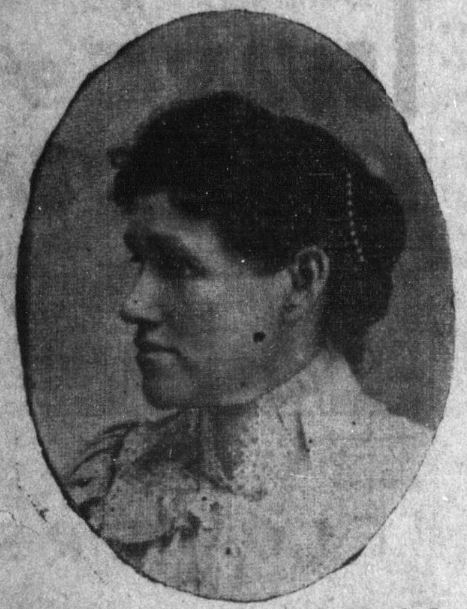
Gertrude Walker (1857-1943) [Bruce, Brookings County] was an auditor for the state suffrage organization from 1909 to 1916, and did organizing work in Brookings County in 1910, a little in 1914, and in 1915-1916 (until moving to California).
Jennie D. Walton (1877-1961) [Huron, Beadle County] signed a suffrage petition in 1910, served as state corresponding secretary from 1910 to 1913, and was involved in the short-lived discussions about forming a women’s political party in the winter of 1910 [Daily Huronite (Huron SD), July 11, 1910, August 25, 1910; Union County Courier (Elk Point SD), September 1, 1910; Pierre Weekly Free Press (SD), December 8, 1910, March 2, 1911; Argus-Leader (Sioux Falls, SD), July 26, 1912; Forest City Press (SD), July 11, 1913; RD04998, Constitution of the South Dakota Universal Franchise League, Pyle Papers USD; Pickler to Woman’s Journal c/o Agnes E. Ryan, December 1, 1913, Gen. Corr., 1839-1961, mss34132, box 28, reel 19, NAWSA Records, Library of Congress]. Jennie M. Douglas was born in Minnesota and was a school teacher in Emmett MN. In September 1901, she married Miles E. Walton, a dentist from Huron SD, and they moved to Huron. Jennie Walton was also involved with various sororal organizations in the 1910s. Around 1924, having divorced from Miles, Jennie moved to 3153 31st Ave. S., Minneapolis with her daughter Dorothy (b.1902) and son George D. (b.1914). In Minneapolis, Jennie was a teacher at Roosevelt High School. Between 1940 and 1948, she and Dorothy moved to Vallejo CA, where George was living with his family [Minneapolis Tribune (MN), September 11, 1901; Pierre Weekly Free Press (SD), June 2, 1910; Daily Huronite (Huron SD), January 9, 1914; Huron Weekly State Spirit (SD), June 17, 1915; 1880-1940 US census, MN Marriages Index, 1907-1965 city directories for Huron, Minneapolis, and Vallejo, 1915 SD census, CA Death Index, via Ancestry.com].
Alonzo Wardall (1845-1918) [Huron, Beadle County] was the first vice-president of the South Dakota Equal Suffrage Association from October 1889 to July 1890.
Elizabeth Murray Wardall (1848-1917) [Huron, Beadle County] participated in the organization of the South Dakota Equal Suffrage Association, was superintendent of press work for the 1890 campaign, and promoted suffrage within the Farmers’ Alliance at state and national levels. From December 1890 to 1893, she was SDESA’s secretary / secretary-treasurer. She continued to work for suffrage after moving to Kansas and Washington state.
Myra Pepper Weller (1856-1943) [Mitchell, Davison County] was active in local and state suffrage campaigns in 1914-1918, the Congressional Union for Woman Suffrage’s state organizing, and the local and state League of Women Voters in 1919-1920.
Charles S. Whiting (1863-1922) [Pierre, Hughes County] supported state suffrage amendment campaigns in 1916 and 1918, and spoke at the first state convention of women voters in Pierre in January 1919.

Elinor H. Whiting (1866-1962) [Pierre, Hughes County] was part of state leadership in 1910 and 1915-1918, was a delegate to the national convention twice, was county chair in 1916 and 1918, and was active with the SD League of Women Voters into 1924.
Rev. Eliza Tupper Wilkes (1844-1917) [Sioux Falls, Minnehaha County] was vice-president for Dakota Territory for NWSA in 1884 and 1886, was president of the Minnehaha County Equal Suffrage Club in 1889, did public lectures for suffrage in the fall of 1897

M. Jean Wilkinson [Schanke] (1876-1953) [Faulkton, Faulk County] worked as the headquarters secretary for the Franchise department of the South Dakota WCTU, including arrangements and press for speakers, campaign events and literature, and doing some speaking herself.
Clare M. Williams (1858-1925) [Brookings / Watertown] campaigned for suffrage through the WCTU and became state secretary for the SDESA for the 1898 campaign. She spoke to local and district WCTU meetings, participated in the state suffrage convention in Mitchell in the fall of 1897, and in August 1898 set up a headquarters in Brookings in an office over the Collins’ clothing store. As secretary, she handled much of the state correspondence about speakers and campaign literature, which is part of the Pickler Papers at the SD State Archives. She remained state secretary into 1899. After the Williams’ moved to Watertown, she perhaps was also on the county committee for the 1918 campaign [Semi-Weekly Register (Brookings SD), May 29, 1897, June 16, 1897, October 9, 1897, October 23, 1897, August 9, 1898, October 25, 1898, November 4, 1898, December 2, 1898; Mitchell Capital (SD), September 24, 1897, October 1, 1897, September 1, 1899; Kimball Graphic (SD), October 14, 1898; Topeka State Journal (KS), November 5, 1898; Williams to Pyle, February 20, 1918, RD07936, and Pidgeon to Pyle, February 8, 1918, RD07721, Pyle papers USD; Avery, ed., Proceedings of the 32nd Annual Convention of NAWSA, held at Washington, D.C., Feb. 8, 9, 10, 12, 13, and 14, 1900 (Philadelphia: Alfred J. Ferris, 1900), 89; Nelson in Lauck et al., Plains Political Tradition, vol. 1, 141; Nelson in Lahlum/Rozum, Equality at the Ballot Box, 143]. Clare M. Bunn was born in Wisconsin, and was a teacher maybe and/or worked as a compositor (for a newspaper?). She married James A. Williams in Wisconsin in 1882. They lived in Willow Lakes c.1891, and moved to Brookings by 1897 (maybe while/because son Losey was a student at SDSU). In 1891-1892, she published the White Ribbon Journal and did press work for the WCTU. In 1898, she was local WCTU president. The Williams’ moved to Glenwood, Deuel County for a few years, then returned to Brookings in 1902. She was also involved with the Degree of Honor. They moved to Watertown in 1904 and Clare was assistant librarian at the Carnegie library in 1908-1910. In 1918, she was listed with the publicity committee for the local Council of National Defense. In 1920, they lived on a farm in Ulysses NY, but she was back in Wisconsin when she died in 1925 [Reporter and Farmer (Webster SD), May 14, 1891, October 1, 1891; Brookings (Weekly) Register (SD), September 9, 1892, December 22, 1898, March 20, 1902, January 14, 1904 October 27, 1904, December 22, 1904; Semi-Weekly Register (Brookings SD), March 31, 1897, September 1, 1897, December 1, 1897, April 1, 1898, April 8, 1898, May 10, 1898; Saturday News (Watertown SD), May 15, 1908 etc., November 18, 1910, December 16, 1910, January 24, 1918, June 20, 1918; Topeka State Journal (KS), November 5, 1898; “Clare M. Bunn Williams” and “James Albert Williams,” Findagrave.com; 1860-1920 {except 1910…} US census, WI Marriage Records, 1916 Watertown city directory, and WI Death Records, via Ancestry.com].
“Williams concluded, ‘Woman suffrage is not a question of expediency… it is a question of abstract right… Right is right, truth is truth and must prevail.'”
Nelson in Lahlum/Rozum, Equality at the Ballot Box, 143.
More to come!
